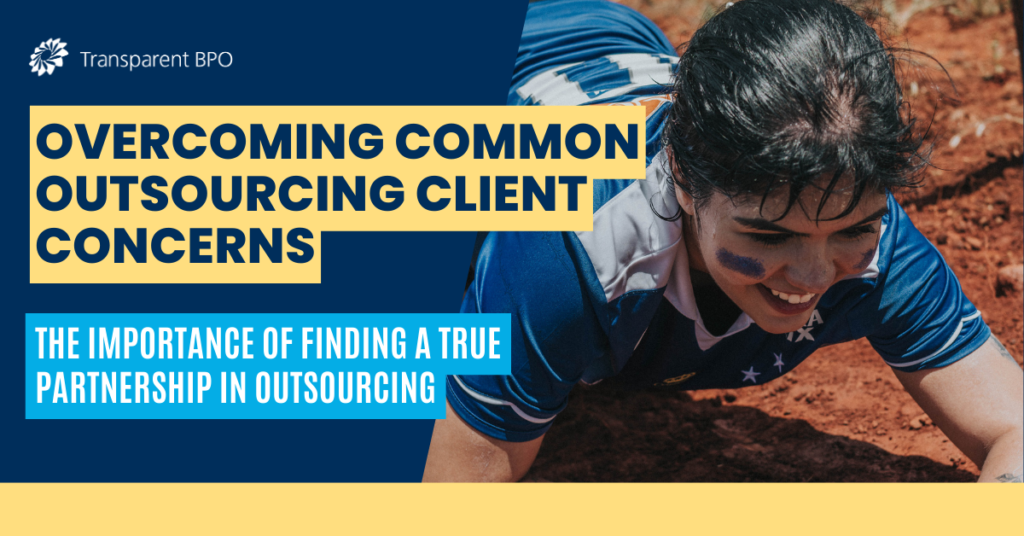Overcoming Outsourcing Client Concerns
A recent HFS Pulse Survey highlights several primary areas of concern for enterprises looking to outsource their operations: technological disruptions, work environment changes, economic volatility, and intense competition.

Despite the ever-evolving remote business landscape, BPO providers have an opportunity to tackle enterprise concerns head-on and make a positive impact.
Leveraging well-planned strategies amid these challenges – such as developing agile approaches or providing active cost management support – has the potential for businesses and outsourcing companies to succeed in this challenging terrain together!
Through a true partnership between BPO and clients and a deep analysis of customer interaction data, such as questions or consumer feedback – client organizations can spot common customer journey trouble points and harness this information to adjust the products or services accordingly.
Additionally, this data can help the BPO provider identify where they need to adjust their services, be it in the approach to training, adapting new or different technologies, or providing a variety of resources to equip agents best to handle what they are facing day to day. There truly is no one size fits all solution, which is why ensuring a client and their BPO provider really do make a good match. The relationship and having vendors that get to know you, your end-users, and the challenges each will face are crucial to all sides of the equation. Enterprise leaders are growing far more aware of this fact and recognize the role of data analytics in driving growth. Businesses are increasingly turning to BPO providers for help leveraging this data, and we – as providers, need to be ready and equipped to help create insight and drive better decisions.
There remain a few significant hang-ups, as mentioned by the HFS Pulse survey, which we will address:
- Risk and Compliance – Clients look to BPOs to manage and prevent further critical risk and compliance concerns. With increasing data breaches and identity theft, they need partners who can manage data security, privacy laws, regulation, oversight and control, IP rights, and assorted other risk management. All of these add up to hesitation – which needs to be addressed by the proper robust measures and mitigation steps to ensure the highest levels of security. TBPO takes this seriously and protects our clients with certifications and guidelines in place, such as SOC 2, HIPAA Compliance, PCI DSS, and TCPA Compliance, ensuring our customers, locations, and their sensitive data are always protected.
- Unique Scope of Work – As mentioned, every client and program is different – Enterprises all feel they are unique, and they’re right. BPOs need to show and assure their clients that they understand the client’s organization and unique challenges and offer customized solutions that meet and exceed performance while coming in at the correct cost. However, this does not mean replicating their captive(internal) setup is impossible – you need the right BPO partner in position.
- Value Proposition – Tying everything together is end-cost – which can make or break a partnership. Budget is frequently a key driver for decisions. Still, BPOs cannot focus purely on cost savings paramount over everything else. BPO providers must also demonstrate and deliver agility, understanding, adaptability, and innovation – all along with a consistently high-quality service for their business partners.
In summary,
You may or may not get what you pay for – again, why choosing the RIGHT partner helps balance between what is needed, what is promised, and what gets delivered. Differentiation from the BPO pack through what is provided, how they perform, and the ability to be a true partner and extension of their clients typically makes for a better provider than one solely driven by shaving costs.
Enterprise leaders today are expecting more than ever from their BPO providers. To stay ahead, savvy service partners should utilize analytics and various other approaches to enhance data integration across multiple sources while understanding every client’s unique requirements for top-notch solutions that solve any underlying issues alongside optimization and better outcomes.
